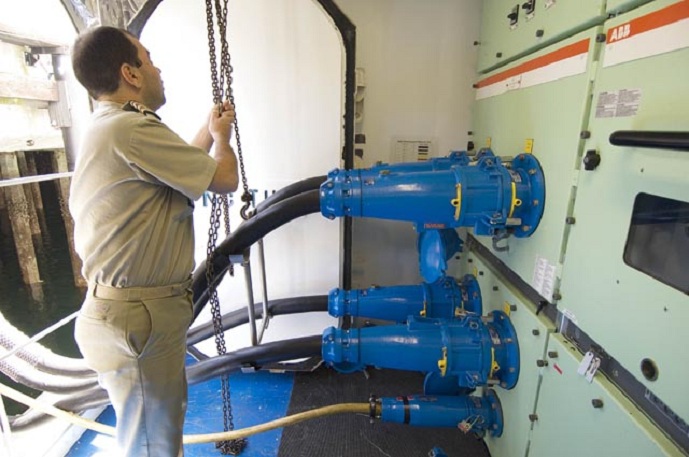After a five-year delay and complaints from its Red Hook neighbors, the Brooklyn Cruise Terminal in New York City flipped the switch Saturday.
A shore power connection powered up the Cunard liner Queen Mary 2 during its 13-hour port call, marking first official use of the $21 million system. Only the second shore powered cruise ship berth on the Atlantic coast of North America, the project seeks to develop a greener port and address community concerns about maritime air pollution.
The Brooklyn project began in 2011, aided by a Port Authority of NY/NJ study that predicted putting berthed ships on shore power would save $99 million in public health costs over the first 15 years — fewer chronic illnesses, asthma attacks and the like.
"My argument always has been, this should be an easy one, and it should be an example for other pollution sources around the harbor," said Adam Armstrong, a Red Hook resident who advocated for shore power through his A View From the Hook website and social media. "There was roadblock after roadblock...I can't say it hasn't been frustrating."
In an era when fuel costs make it economical to run ship generators in port, the cost of electricity from Con Edison’s city grid was an issue. The Queen Mary 2 needs 13 megawatts to run all its systems, equivalent to the power draw at Boston’s Logan Airport, according to an analysis of shore power challenges released last summer by the Massachusetts Port Authority (Massport).
Subsidies from the New York City Economic Development Corporation and New York Power Authority brought the power costs down to 12 cents per kilowatt-hour for Carnival Corp., a primary user of the terminal.
On the West Coast, California has pushed more aggressive moves to cut harbor air emissions over the past decade. At the end of October, officials at the Port of Oakland, Calif., released results from a study finding tug and workboat emissions were cut by 53% between 2005 and 2015, while ship emissions went down by 75%, and emissions from trucks declined 98%.
Those are results from a 2008 commitment “to reduce seaport-related diesel health risk by 85% by the year 2020,” according to the Oakland report. Richard Sinkoff, the port’s director of environmental programs and planning, called it “a significant achievement.” Diesel particulate matter, which is linked to increased risk for lung cancer, was cut from 261 tons annually to 61 tons.
Of that, vessels are still a big part. Truck DPM emissions went from 16 tons to 0.4 tons over those 10 years. So there is still a long way to go and Oakland has a $60 million project for shore power.
“The work and investments by the Port and our partners have nearly eliminated Port truck emissions and greatly reduced other emissions,” said Chris Lytle, executive director of Port of Oakland, said in announcing the findings. “But we’re not done — we’ll keep working to minimize the potential impact that trade has on our community.”
"The West Coast has been doing this a long time," Armstrong said. "The industry continues, and the neighborhood is healthy."




